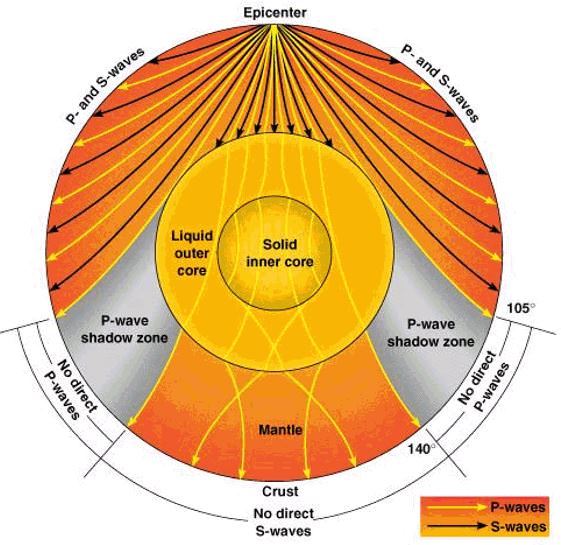Why do some seismograph stations receive both primary and secondary waves from an earthquake but other stations don't?
1 Answer
The core of the Earth only allows certain waves to travel through.
Explanation:
P-waves, or primary waves, are faster. They travel through liquids and solids, but move more slowly in liquids. S-waves, or secondary waves, are slower, and can only travel through solids.
Thus, P-waves are the only ones that can travel through the all of Earth and can reach every seismograph station. However, since S-waves can't go through the liquid outer core, it creates a "shadow", where S-waves can't be recorded, simply because they can't reach.
Additionally, the inner core of the Earth causes P-waves to get diffracted, so there is a "shadow zone" for P-waves as well.
![http://slideplayer.com/slide/10656705/]
( )
)
This diagram explains it pretty well. In the space that there are no P-waves, there are no S-waves either. That is why some seismograph stations don't receive any reports of earthquakes, even if they do happen.


